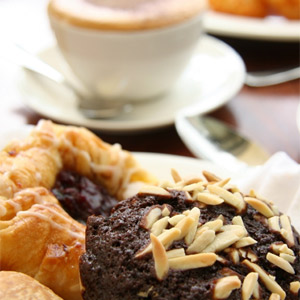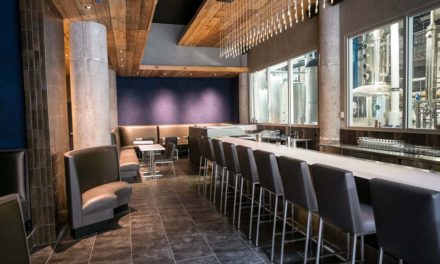Continental Breakfast:
Served buffet style, this is the most cost effective menu option, and hotels or caterers may offer two or three levels of options in this category, giving event planners different choices. Items may include:
- One to three juices (e.g., apple, orange, tomato)
- Assorted baked breakfast breads (e.g., croissants, muffins, toasts)
- Coffee, decaffeinated coffee and tea
- Seasonal fruit (usually an upgrade option)
When to choose this option: A continental breakfast is good for team meetings, trainings or customer events that may include staff to mid-level management.
Traditional Breakfast Buffets:
If you take a close look at menu pricing, you will notice that catering services is guiding the event planner to this option for maximum value. Available usually as a standard or deluxe level option, they usually include the continental items as well as the following:
- Scrambled eggs
- Meat (e.g., bacon, sausage)
- Fried potatoes
When to choose this option: If the event planner isn’t under too tight of a budget constraint, this is usually a safe choice. Breakfast buffets are better options in the winter and/or when “healthy food” isn’t requested by the client.
Breakfast Stations:
An excellent way to make any breakfast event memorable is to add a made-to-order breakfast station that incorporates fresh ingredients. Popular stations include:
- Omelet station
- Waffle station
- Pancake station
When to choose this option: Breakfast stations are added to continental or breakfast buffets. The cost will increase an event planner’s budget, but people enjoy freshly made items. Consider adding this to an event that includes mid-level and upper management attendees.
Plated Breakfasts:
Plated meals offer a more formal touch to a breakfast business meeting or event. Most caterers will offer several different options that allow a planner to build anything from a fruit platter breakfast to traditional breakfast items or a signature local meal. Essentially, plated breakfasts are a presentation of the various continental or traditional breakfasts.
When to choose this option: A plated breakfast is usually easier to pull off in a more intimate setting, such as an executive breakfast meeting.
A La Cart Options:
To be honest, I do not typically recommend building a breakfast menu a la carte because it isn’t cost effective. Priced usually based on quantity rather than per person, a quick sampling of popular a la carte items to get your thinking started include:
- Soft drinks
- Bottled water
- Lemonade, iced tea
- Bottled water
- Flavored coffees
- Bagels with assorted cream cheeses
When to choose this option: It’s best to add a la carte items to one of the continental, buffet or plated approaches.
Healthy Options:
With increased attention on health and wellness, many event planners are looking for hotels and caterers to offer more healthy items for their guests. This is occasionally challenging because it seems some of the larger hotel and/or convention center catering departments are still working to catch up. First, make sure the menu does not include anything fried. Then, it helps to request that they consider a custom menu, including some of the following:
- Granola cereals
- Whole grain breads
- Low-fat spreads
When to choose this option: When wellness and health are important to guests.
Memorable Touches:
Although most people don’t have the time to enjoy breakfast, they aren’t usually impressed by typical hotel or catered event breakfast menus. To make your breakfast meeting more interesting, try one of these suggestions:
- Assorted fruit yogurts served in glassware
- Fresh granola bars made by the executive chef
- Freshly prepared omelet station and chef
A final note: request that the venue provide a second type of breakfast meat, such as turkey bacon or turkey sausage in addition to traditional pork items.
May Not Be Reproduced; Published on About.com





